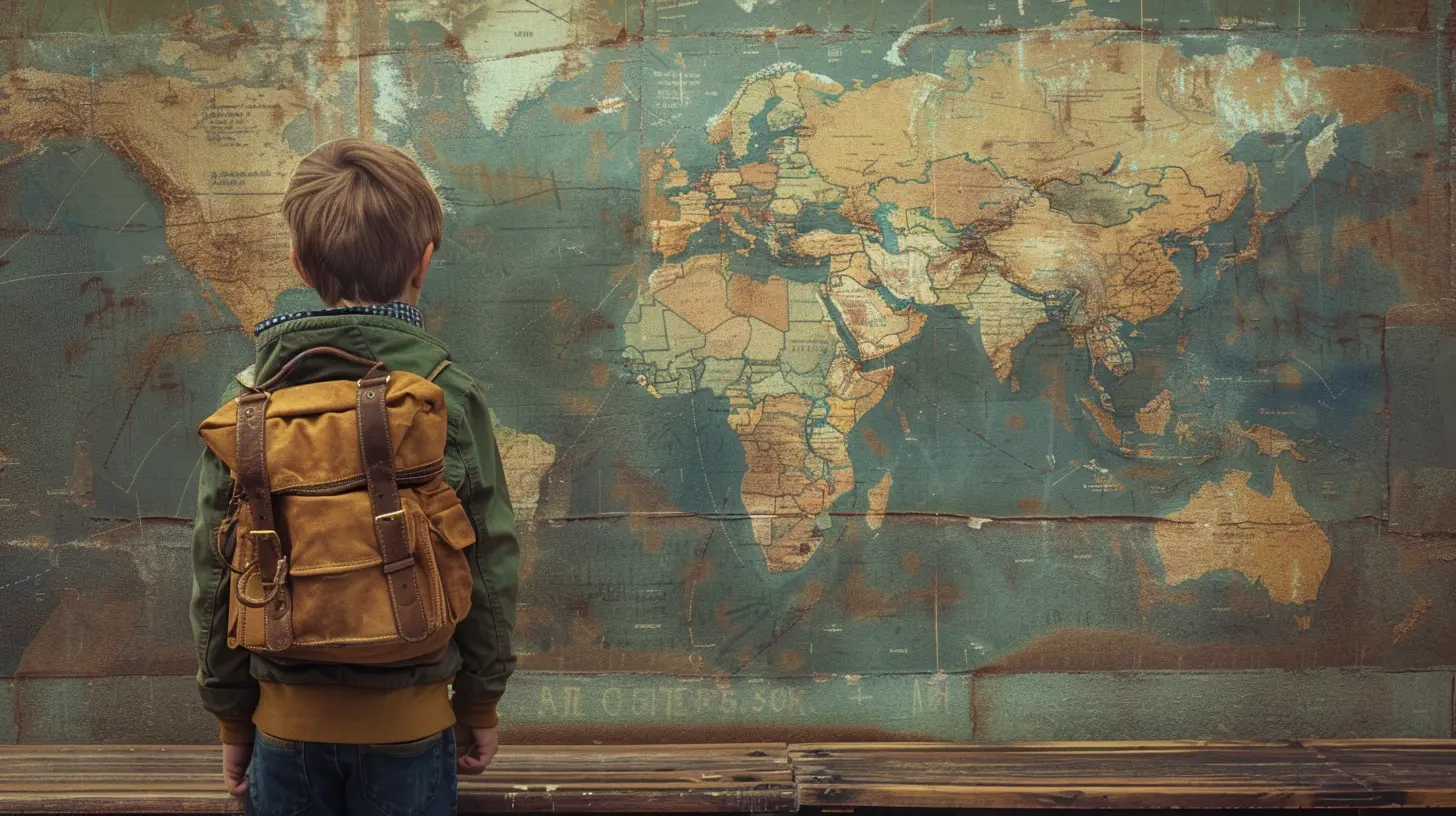How Distance Education is Transforming Traditional Learning
9 June 2025
Remember when learning meant dragging yourself out of bed at 7 AM, powering through soggy cereal, and running out the door so you wouldn't miss the school bell? Yeah, me too. But let’s be real — times have changed, and so has the way we learn. Say hello to distance education: the comfy-pants, coffee-at-your-desk, learn-while-snacking alternative that’s flipping traditional learning on its head faster than you can say “Zoom class.”
Grab your favorite beverage, pull up a cozy chair (or your bed, we don’t judge), and let's chat about how distance education is taking the clunky old education train and turning it into a sleek, modern bullet train that runs on Wi-Fi.
📚 What Even Is Distance Education?
Alright, before we dive into why it’s changing the world, let’s break down what distance education actually is.Imagine going to school without ever stepping into a classroom. No fluorescent lights. No uncomfortable desks. Just you, your laptop, and maybe a cat walking across your keyboard mid-lecture. That’s distance education in a nutshell.
It's learning that happens remotely — usually online — where students and teachers are in different physical locations. It can be live (synchronous), on-demand (asynchronous), or a mix of both. You could be in your pajamas in Pittsburgh while your professor is sipping espresso in Paris.
Cool, right?
🏫 Traditional Learning: The Good, The Bad, and The Dusty Chalkboards
Look, we’re not here to throw shade at traditional education. It’s been around for centuries and for a good reason — there’s value in face-to-face interaction, group discussions, and awkwardly raising your hand to ask where the restroom is.But let’s be honest: traditional learning comes with some baggage.
The Commute: Waking up early to sit in traffic or catch a packed bus? Not ideal.
Rigidity: You’re expected to learn at the same pace as 30 other students. What if you’re a slow-burn genius or a lightning-fast learner?
Costs: Between tuition, textbooks, and a never-ending supply of overpriced campus coffee, the price tag is hefty.
Access: Not everyone lives near a good school, and relocating isn’t always possible (or affordable).
So, while traditional learning has its perks, it's not exactly the most flexible or inclusive system out there.
🎧 Enter Distance Education: Learning Goes Digital
The internet has officially crashed the education party, and it's brought snacks. Distance education is offering things that traditional learning simply... doesn’t.1. Flexibility & Freedom (AKA The Holy Grail)
Gone are the days of rigid schedules and mandatory 8 AM classes. With distance learning, you can learn when you want, where you want. Early bird? Get studying before sunrise. Night owl? Burn the midnight oil.You’re in control of your learning timeline, which means education can finally fit into your chaotic life — and not the other way around.
2. Study Anywhere — Even From Your Couch Fort
No classroom? No problem. All you need is an internet connection. Your living room, the local coffee shop, or even the beach (though sand + laptop = bad idea) can become your classroom.This is a game-changer for people in remote areas, travelers, parents, or folks with physical limitations. It brings education to you.
3. Customizable Pace: Sprint or Stroll, It’s Your Choice
Everybody learns differently. Some folks devour textbooks in a single sitting, while others need a few replays of a lecture to really get it. Distance education lets you hit pause, rewind, or rewatch your professor’s explanation until it actually clicks.It’s like having a Netflix subscription... but for knowledge.
4. Tech-Savvy Skills by Osmosis
By the time you finish an online course, you’ve probably mastered more digital tools than the average office manager. Video conferencing, cloud sharing, collaborative documents, learning management systems — you’re basically running a remote startup just to pass English 101.These aren’t just useful for school — they’re gold on your resume.
🤔 So, Is Distance Education Actually Effective?
Great question! (See, this is why we get along.)Research shows that distance education can be just as effective — if not more so — than traditional methods, especially when done well. Students are often more engaged, retain more information, and enjoy a greater sense of autonomy over their learning.
Of course, “done well” is the key phrase here. Watching TikToks during your online lecture? Not the pinnacle of educational achievement. But if a student puts in the effort, distance learning can deliver results that rival, or even beat, traditional classrooms.
💸 Let’s Talk About Cost (Because College Ain’t Cheap)
One of the major game-changers with distance education is the price tag. Online programs often cost way less than their on-campus counterparts. There’s less overhead, fewer textbooks (hello, PDFs), and zero need for commuting, dorms, or meal plans.It levels the playing field. Suddenly, higher education isn’t just for those with deep pockets — it’s for everyone with Wi-Fi and determination.
🧠 Keeping It Real: The Challenges Of Learning Remotely
Okay, it’s not all sunshine, pajamas, and productivity. Distance learning has its quirks and challenges.Procrastination Nation
When your classroom is your bedroom and your schedule is entirely up to you, it’s easy to slip into the “I’ll do it later” trap.No Hallway Chats
You miss out on some of the social aspects of school — like lunch breaks with friends or passionately arguing over whether pineapple belongs on pizza (it does, fight me).Tech Troubles
Not everyone has access to high-speed internet or high-end devices. And when the Wi-Fi drops mid-exam? Pure chaos.Self-Motivation Is A Must
There’s no teacher glaring at you across the room or classmates whispering about the pop quiz. You’ve got to be your own hype squad.Still, these hurdles are totally manageable — especially if schools and educators build support systems and tools into their programs (and they’re getting better at it every year).
🧑🏫 Teachers: From Whiteboards to Webcams
Let’s not forget the educators! Distance education hasn’t just transformed student life; it’s turned teachers into online content creators.They’re building interactive courses, recording lectures like YouTubers, and learning tech faster than your grandma figured out Facebook.
Sure, it was a steep learning curve... but many teachers are now embracing these tools to connect with students in creative, meaningful ways. It’s teaching — upgraded.
🌍 Global Classrooms: The World Is Your School
Perhaps the coolest thing about distance education? It’s global.You can take a business course from a professor in London, attend a virtual seminar hosted in Tokyo, or collaborate with classmates from Nairobi, New York, and New Delhi — all in one week.
This kind of cultural exchange and global collaboration? Pretty hard to do in a traditional classroom. Distance learning is turning education into an international melting pot, and it’s delicious.
🎓 What Does The Future Look Like?
Spoiler alert: distance education isn’t going anywhere.In fact, we’re probably heading toward a permanent hybrid model — a blend of online and in-person learning that offers the best of both worlds.
Schools, colleges, and universities are investing in better tech, more engaging platforms, and smarter ways to assess learning online. It’s evolving rapidly, and the pandemic only hit the fast-forward button.
And as Gen Z and Gen Alpha grow up with this as their norm, future learning will be less about “where” and more about “how.”
So maybe the lecture hall isn't extinct... just upgraded. Like a smarter, sleeker version 2.0.
💬 Final Thoughts: Distance Education Didn’t Just Knock — It Kicked the Door In
The education game has changed, my friend. Distance education didn’t politely walk in and ask for a seat at the table. It kicked the door down, set up a standing desk, and said, “Let’s do this differently.”And we’re all better for it.
So whether you’re a high schooler, a college student, a working mom going back to school, or a retiree finally chasing that literature degree, distance education has got your back — and your Wi-Fi password.
And hey, if you’re reading this in your pajamas... same. No judgment.
all images in this post were generated using AI tools
Category:
Distance EducationAuthor:

Madeleine Newton
Discussion
rate this article
2 comments
Velma Banks
This insightful article highlights how distance education is revolutionizing traditional learning methods, enhancing accessibility and flexibility. It emphasizes the need for adaptive teaching strategies to meet diverse learner needs in a digital age.
June 13, 2025 at 3:22 AM

Madeleine Newton
Thank you for your thoughtful comment! I'm glad you found the article highlights on the transformative impact of distance education valuable. Adaptive strategies are indeed crucial for meeting diverse learner needs.
Raleigh Rodriguez
Distance education: where pajamas are the new formal wear, and your biggest distraction is deciding between snacks or study breaks. Who's with me?
June 11, 2025 at 3:47 AM

Madeleine Newton
Absolutely, distance education redefines comfort and flexibility, making learning more accessible while allowing for those all-important snack breaks!


